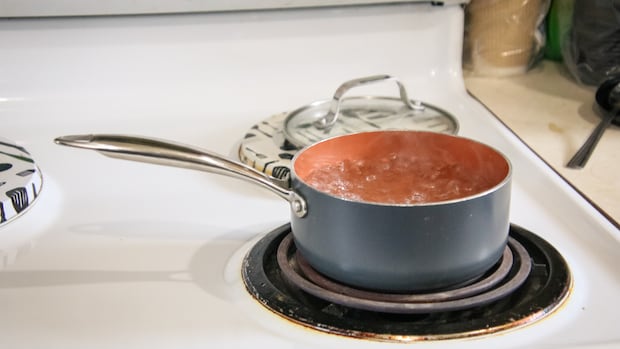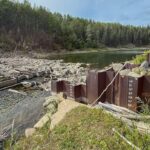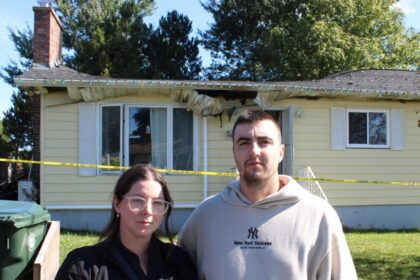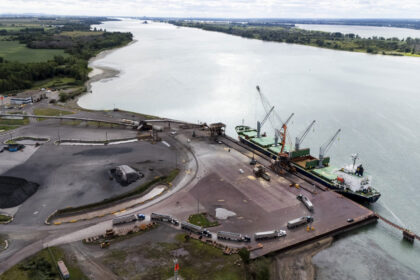British ColumbiaAs you’re pulling out pots and pans to cook Thanksgiving dinner this weekend, some culinary experts are warning Canadians about the pitfalls of a common, convenient tool you might be turning to: non-stick cookware. Experts worry about health, sustainability of non-stick pots and pansCourtney Dickson · CBC News · Posted: Oct 11, 2025 10:00 AM EDT | Last Updated: 8 hours agoSome culinary experts are advising British Columbians to make the switch away from non-stick cookware, for a variety of reasons. (Olivia Stefanovich/CBC)As you’re pulling out pots and pans to cook Thanksgiving dinner this weekend, some culinary experts are warning Canadians about the pitfalls of a common, convenient tool you might be turning to: non-stick cookware. When she was just starting out in the industry, maintaining a food blog, Julia House spent hours researching the right tools to buy for her ever-growing kitchen, wanting to know which products would last, and which ones were safe. “The nature of non-stick pans is there isn’t one on the market that will last forever, period. Full stop. Anyone who tells you otherwise is not being honest with you,” House said. “It’s a thin material, it’s a soft material.”Non-stick pots and pans contain perfluoroalkyl and polyfluoroalkyl substances — more commonly known as PFAS. PFAS have been dubbed forever chemicals because they don’t degrade naturally. They aren’t just found in non-stick cookware; PFAS are also used in cosmetics, take-out boxes, medical devices — the list goes on. WATCH | Health risks of PFAS:The impact of “forever chemicals” on people and the environment in the NorthThey’re called “forever chemicals” or PFAS — synthetic chemicals that are used in a wide range of products like food packaging, non-stick pans, stain-resistant fabrics, cosmetics, cleaning products and firefighting foams. They don’t break down, can build up in wildlife and people — and they present health risks. Now, they’re showing up in water systems in the North.According to Health Canada, exposure to PFAS can affect the liver, immune, reproductive and nervous systems, as well as kidneys, thyroid and metabolism. They’re so harmful that California’s legislature has approved a bill that would ban the sale of cookware made with PFAS. But, as The New York Times has reported, some celebrity chefs have come out in opposition to the bill, particularly those who sell or endorse cookware lines. California Governor Gavin Newsom’s deadline to sign the bill is fast approaching, on Oct. 13. As is at times the case, how B.C.’s government decides to approach PFAS may depend on what happens in California. In a statement to CBC News, B.C.’s Ministry of the Attorney General said the province is looking into ways to address PFAS — and watching closely to see what happens in other jurisdictions.“We are determined to use all tools at our disposal, including legislation, regulation and litigation, to hold bad-faith actors accountable for their actions,” the ministry said.Alternatives Both House, who now owns a cookware store of her own in Nanaimo, B.C., and Camosun College culinary arts program chair David Lang agree there are alternatives to non-stick pans that work for all lifestyles.“We have really good options for alternatives and it’s really just cooking technique,” Lang said. “You can take a French steel pan or a carbon steel pan or a cast iron pan or even a stainless steel pan, and make it non-stick. It’s just technique and taking the time to learn it.”Metal pans, like the ones pictured, will last longer if they’re properly cared for, chef David Lang says. (Rohit Joseph/CBC)For example, Lang said carbon steel pans are easy to maintain. “You can wash it. They say don’t, but you can. The important thing is to rinse it well and re-season it.”Even more importantly, Lang said, is making sure you dry your steel pans so they don’t rust. It’s also more economical to buy a pan that will last longer, rather than purchasing multiple lower-quality, non-stick pans, the pair say. “A carbon steel pan … that’s a lifetime pan if you treat it right,” Lang said. But House said you may already have a safer pan in your arsenal, it’s just about learning how to use it properly. “You’re going to have to know your pan and you’re going to have to get to know your stove. Give yourself like three or four days and you can figure it out.” It all comes down to technique, according to Lang.“It’s just so easy to make an omelet in a pan that’s carbon steel,” he said. “It’s just about heating up the pan, adding the fat or the medium that you’re going to cook in and then adding your product and it is as non-stick or more non-stick than a non-stick pan.”ABOUT THE AUTHORCourtney Dickson is an award-winning journalist with CBC News based in Vancouver, B.C.With files from Rohit Joseph
As California moves to ban non-stick pans, culinary experts say British Columbians should consider the same












